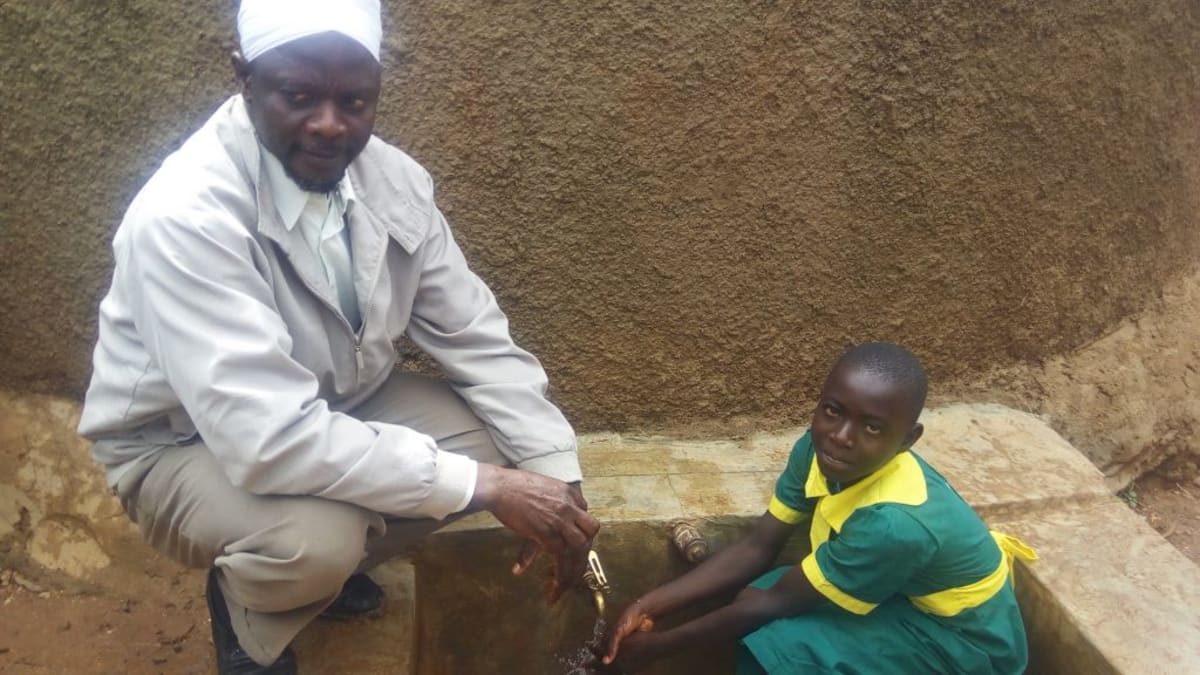This project is a part of our shared program with Western Water And Sanitation Forum (WEWASAFO). Our team is pleased to directly share the below report (edited for clarity, as needed).
Welcome to the School
ADC Buhunyilu Primary School was started in the year 2007 by its sponsor, African Divine Church. They opened with the goal of helping children around Buhunyilu Village receive an education. The school now has a total of 285 primary pupils and 70 early education pupils. The school employs 16 teachers and two support staff.
Students wake up very early to prepare for school because they are punished if they arrive late. They are expected to begin chores around school as early as 6am!
Buhunyilu Primary School learned about this opportunity for clean water, latrines, hand-washing stations and hygiene training through Muraka Primary School. They were there for an event and saw the completed work for themselves. They asked for our contact information and immediately sent in an application.
Water Situation
There is no water at Buhunyilu Primary School.
Students are expected to bring their own container of water to school everyday. Some parents make sure their children are sent to school with water from a clear source. However, the majority of students don't want to carry a heavy container all the way from home and thus fetch water from the point nearest school. This happens to be a passing stream wherein students bend over, dunk their jerrycans, and continue on their way.
Many days, the five liters carried by students isn't enough, and class is interrupted to send them out for more water. When we went out with them during our visit, there were even cows standing in and drinking directly from the same water! This water is used for drinking and cleaning, as well as cooking for the school's lunch program.
Not only is a lot of students' energy and time wasted because of water scarcity, but sickness is also a constant reality. After drinking dirty water from the nearby stream, students suffer from waterborne diseases that keep them out of school and force their parents to spend the little money they have on treatment.
Sanitation Situation
There are eight latrines for students, four for each gender. That means there are about 46 students depending on each pit latrine! There are two pit latrines set aside for staff. We inspected these latrines during our visit and found they're constructed poorly and are filthy.
The school does not have a hand-washing station for teachers or students. Even if the school was aware of how important cleanliness is, there wouldn't be enough water to do the job.
Plans: Hygiene and Sanitation Training and Hand-Washing Stations
Training will be held for three days. The facilitator will use PHAST (participatory hygiene and sanitation transformation), ABCD (asset-based community development), CTC (child to child), lectures, group discussions, and handouts to teach health topics and ways to promote good practices within the school. The CTC method will prepare students to lead other students into healthy habits, as well as kickstart a CTC club for the school. This CTC club will oversee the new facilities, such as hand-washing stations, and make sure they are kept clean and in working condition. The two hand-washing stations will be delivered to the school, and the club will fill them with water on a daily basis and make sure there is always a cleaning agent such as soap or ash.
Plans: VIP Latrines
Two triple-door latrines will be constructed with local materials that the school will help gather. Three doors will serve the girls while the other three serve the boys. And with a new source of water on school grounds, students and staff should have enough to keep these new latrines clean.
Plans: Rainwater Catchment Tank
A 50,000-liter rainwater catchment tank will help alleviate the water crisis at this school. The school will also help gather the needed materials such as sand, rocks, and water from the spring for mixing cement. Once finished, this tank can begin catching rainfall that will be used by the school’s students and staff. Students will no longer be responsible to find enough water to carry to school every day.
We and the school strongly believe that with this assistance, standards will significantly improve. These higher standards will translate to better academic performance!

 Rainwater Catchment
Rainwater Catchment
 Rehabilitation Project
Rehabilitation Project


































